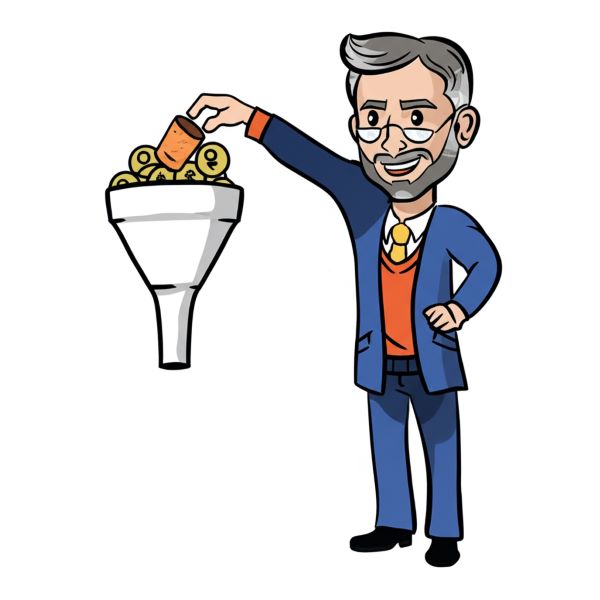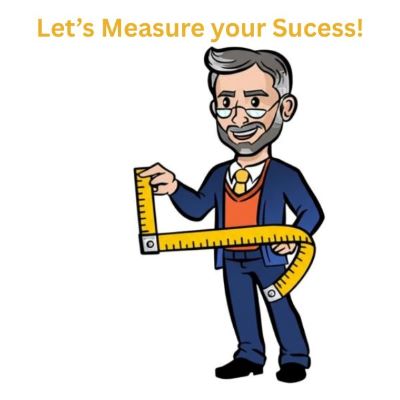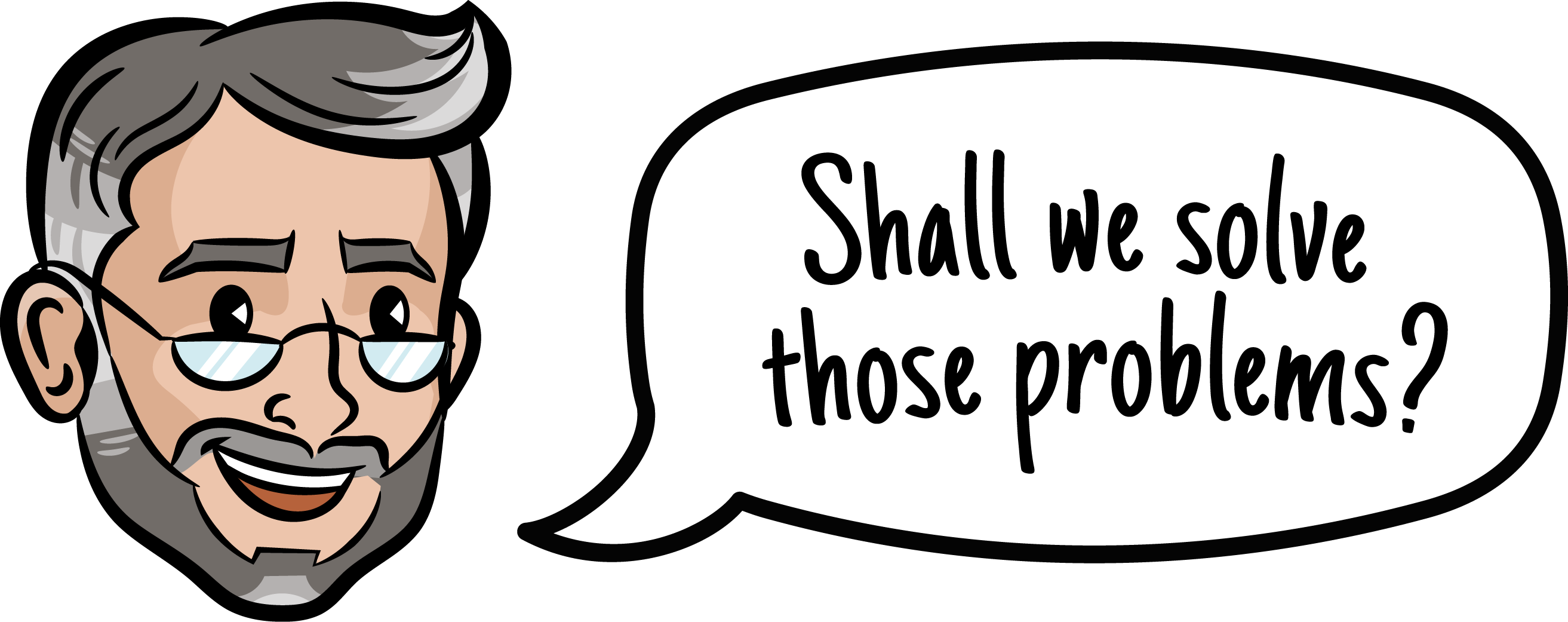Table of Contents
Why Deals Really Stall — And What to Do About It
As a sales or marketing leader, few things are as frustrating as watching promising deals stall or vanish from the pipeline. You invest resources, build momentum, and then… nothing. The deal hits a wall, and your carefully constructed sales funnel velocity grinds to a halt.
This isn’t just a minor hiccup; it’s often a critical blockage that requires immediate, decisive action. You’re responsible for hitting targets, and that means you’re responsible for removing these obstacles.
In this article, we’ll tackle these critical roadblocks head-on. We’ll define what a ‘show stopper’ means in business. Then, we’ll identify common issues that hurt your sales process. Most importantly, we’ll give you clear, practical strategies to fix them and strengthen your sales engine.

When deals stall, it’s often a hidden show stopper at work—and ignoring it slows everything down.
Our goal is simple. We want to show you that by spotting and tackling “show stoppers” early, you can keep momentum, avoid major delays, and move deals forward.
Understanding Sales Funnel Show Stoppers
Let’s cut straight to the chase. What is a “show stopper” when we’re talking about sales and marketing pipelines? It’s more than just a typical sales objection or a minor delay. A show stopper is a fundamental risk, a critical roadblock, or a deal-breaking condition that, if not resolved, will absolutely kill the deal or indefinitely halt its progress through the sales process.
Defining a “Show Stopper” in a Business & Sales Context
In the world of business-to-business sales, a show stopper represents a major, unresolved issue that prevents a deal from moving forward or closing. Think of it as a non-negotiable obstacle that makes completing the transaction impossible under the current circumstances. It’s not just the prospect saying “it costs too much” – a common sales objection. It’s finding out they have no budget for this solution this year. Or learning there’s a legal requirement you can’t meet.
- More than just an objection: identifying fundamental risks or roadblocks:
- It might be a major budget issue, internal politics at the prospect’s company, or a required tech integration your product can’t support. These are fundamental sales cycle challenges that threaten the entire foundation of the deal.
- Impact on deal progress and pipeline velocity:
- Show stoppers directly impact deal velocity. When a show stopper emerges, the deal doesn’t just slow down; it essentially stops. It consumes valuable sales resources without advancing, negatively impacting sales forecasts and overall pipeline health. A pipeline full of stalled deals due to unresolved show stoppers creates sales process bottlenecks that stifle growth.
- Distinction from standard sales objections vs. critical deal breakers:
- Standard sales objections (like concerns about features, implementation timelines, or minor pricing points) can usually be addressed through skilled negotiation, clarification, or value demonstration. A show stopper, however, is a critical deal blocker. It’s a deal-breaking requirement or situation that invalidates the core premise of the potential partnership or makes the transaction impossible. Recognizing this distinction is crucial for effective sales management.
Why Identifying and Addressing Show Stoppers is Crucial for Sales Leaders
For marketing and sales leaders, understanding and actively managing show stoppers isn’t optional; it’s a core responsibility. Your ability to identify and help your teams overcoming deal blockers directly impacts your team’s performance and the company’s revenue.
- Maintaining sales momentum and pipeline health:
- A healthy sales pipeline has consistent deal velocity. Unresolved show stoppers create stagnant pools in the pipeline, draining momentum and tying up valuable sales reps. Proactively identifying and addressing them keeps the pipeline moving forward, freeing up capacity for new opportunities.
- Meeting revenue targets and forecasting accuracy:
- Show stoppers introduce significant uncertainty into sales forecasting. A deal with a known, unresolved show stopper should be treated differently in the forecast than one with minor objections. Leaders who understand and track these risks can build more accurate forecasts and take timely action to mitigate shortfalls.
- The leader’s responsibility in removing obstacles:
- This is where the rubber meets the road for leaders. It’s your job to provide the strategy, resources, and support needed to navigate complex sales cycle challenges. This includes helping reps identify show stoppers early, providing access to internal experts (legal, technical, executive), and sometimes, stepping in yourself for high-stakes situations. Leaders are the primary problem-solvers for systemic sales process bottlenecks and individual deal blockers.
- Relationship to overall sales process bottlenecks and challenges:
- Individual deal show stoppers often highlight systemic weaknesses in the overall sales process. Are many deals stalling at the same stage due to budget issues? That might indicate a problem with early-stage qualification or value messaging. Recognizing these patterns helps leaders identify broader sales process bottlenecks that need strategic adjustment.

Identifying Potential Show Stoppers Early On
The best way to deal with a show stopper is to spot it before it brings the deal to a complete halt. Early identification allows for strategic planning, risk mitigation, or, if necessary, quickly disqualifying an opportunity to reallocate resources.
Integrating Show Stopper Identification into the Sales Process
Identifying show stoppers shouldn’t be an afterthought. It needs to be a fundamental part of your sales methodology and daily sales activity.
- Training sales teams to recognize warning signs:
- Equip your sales reps with the knowledge and intuition to spot potential deal blockers. This goes beyond basic objection handling training. It involves training them on common red flags related to budget access, political structures, technical feasibility, and the prospect’s decision-making process.
- Actionable Tactics: Conduct regular training sessions focusing on recognizing specific patterns associated with common show stoppers within your industry and product context. Role-play scenarios where reps practice probing for potential risks.
- Equip your sales reps with the knowledge and intuition to spot potential deal blockers. This goes beyond basic objection handling training. It involves training them on common red flags related to budget access, political structures, technical feasibility, and the prospect’s decision-making process.
- Leveraging discovery calls and early interactions:
- The earliest stages of the sales cycle are often the most critical for uncovering potential show stoppers. Your discovery process must be designed to probe deeply beyond surface-level needs. Ask questions that uncover decision-making processes, political landscapes, budget realities, and key stakeholders.
- Asking the right qualifying questions (e.g., BANT, MEDDIC principles):
- Established qualification frameworks like BANT (Budget, Authority, Need, Timing) or MEDDIC (Metrics, Economic Buyer, Decision Criteria, Decision Process, Implicit Pain, Champion) are powerful tools for identifying potential show stoppers. Probing for Budget and Authority (BANT) directly helps uncover funding or political roadblocks. MEDDIC’s focus on Decision Process and Economic Buyer is vital for navigating internal complexities.
- Actionable Tactics: Implement mandatory use of a structured qualification framework (BANT, MEDDIC, or similar) during initial discovery calls. Build deal review stages in your CRM that require reps to document findings for each element of the framework.
- Established qualification frameworks like BANT (Budget, Authority, Need, Timing) or MEDDIC (Metrics, Economic Buyer, Decision Criteria, Decision Process, Implicit Pain, Champion) are powerful tools for identifying potential show stoppers. Probing for Budget and Authority (BANT) directly helps uncover funding or political roadblocks. MEDDIC’s focus on Decision Process and Economic Buyer is vital for navigating internal complexities.
Analyzing Sales Cycle Challenges and Bottlenecks
Data doesn’t lie. Your CRM and sales analytics tools hold valuable clues about where and why deals are stalling. These highlight common sales cycle challenges and sales process bottlenecks.
- Mapping the typical sales cycle stages:
- Understand the ideal journey a prospect takes through your sales process. Define clear stages with specific exit criteria. This provides a baseline against which to measure individual deal progress.
- Identifying common points of friction or delay:
- Where do deals consistently slow down or get stuck? Is it during the technical review stage? Procurement? Legal review? Pinpointing these common points of friction allows you to focus your problem-solving efforts. These are often indicators of systemic sales process bottlenecks.
- Using CRM data and funnel analysis to spot trends:
- Your CRM is a goldmine for identifying show stopper patterns. Analyze stage-to-stage conversion rates, average time spent in each stage, and, critically, the reasons for lost deals. Implement consistent ‘Lost Reason’ tracking in your CRM. Mandate that reps select a specific reason and add detailed notes explaining why a deal was lost, specifically flagging potential show stoppers encountered. Analyze this data quarterly to identify the most common deal blockers.
- Reviewing lost deals for patterns in show stoppers:
- Beyond tracking lost reasons, conduct deeper reviews of significant lost deals. What were the final obstacles? Were they identified early enough? What could have been done differently? This retrospective analysis is key to preventing future show stoppers.
Proactive Risk Assessment in the Sales Pipeline
Every deal carries risk. That’s why strong sales teams plan for them. They treat show stoppers as expected challenges, not last-minute surprises.
- Implementing deal review processes with a focus on risks:
- Regular deal reviews shouldn’t just be about forecasting revenue; they should be about identifying and mitigating risks. Train sales managers to ask critical questions about potential sales cycle challenges: “What are the known obstacles in this deal?”, “Who are the potential detractors?”, “What absolutely must happen for this deal to close, and what could prevent that?”
- Forecasting based on identified risks, not just probabilities:
- Adjust your sales forecasting methodology to incorporate identified show stoppers. A deal with a significant, unresolved show stopper should have a lower probability weighting, regardless of how far along it is in the pipeline. This provides a more realistic forecast.
- Communicating potential show stoppers internally (sales, marketing, product):
- Show stoppers are rarely isolated to sales. Budget issues might indicate a marketing messaging problem or a need for different pricing. Technical hurdles might require product adjustments or more robust sales engineering support. Foster a culture of open communication about potential deal blockers across departments.
Common Show Stoppers in the Sales Funnel
While every deal is unique, certain types of obstacles appear repeatedly, acting as common deal blockers in the sales process. Recognizing these categories helps anticipate and plan for them.
Budget and Funding Issues
Money is frequently the root of sales cycle challenges. What appear as simple sales objections about price can mask deeper budget issues.
- Lack of allocated budget or access to funds:
- The prospect agrees they need the solution, but they simply don’t have the budget line item or the ability to access the necessary funds within the required timeline.
- Unexpected budget cuts or reprioritization:
- Even if the budget was initially available, corporate budget cuts or sudden reprioritization of funds to other projects can eliminate the possibility of the deal moving forward.
- Mismatch between solution cost and perceived value:
- While budget might exist, the prospect (or key stakeholders) may not believe the value your solution provides justifies the cost. This is a perception issue that acts as a show stopper if not addressed.
- Complex procurement processes or hidden costs:
- The official procurement process might introduce delays, unforeseen requirements, or hidden costs (like mandatory integrations or consulting fees) that derail the deal.
Lack of a Strong Internal Champion
Without an advocate on the inside, even the most compelling solution can fail to gain traction.
- Inability to identify or build a relationship with a key advocate:
- You haven’t been able to connect with someone within the organization who genuinely understands the value of your solution and is willing to fight for it.
- Champion lacking sufficient influence or authority:
- You might have a champion, but they don’t have the political capital, organizational seniority, or authority to navigate internal hurdles and secure buy-in from key decision-makers.
- Champion leaving the company or changing roles:
- A major deal blocker is losing your key internal advocate mid-cycle. This can set you back significantly, requiring you to rebuild momentum and find a new champion.
- Multiple stakeholders with conflicting interests:
- When multiple stakeholders exist, but none clearly champion your solution or their interests are misaligned, it creates internal inertia that acts as a show stopper.
Internal Resistance and Stakeholder Misalignment
Large organizations are complex ecosystems. Opposition from within is a significant sales challenge.
- Opposition from key departments (IT, Legal, Procurement, other business units):
- Departments outside the primary adopting group may raise technical concerns (IT), contractual issues (Legal), process roadblocks (Procurement), or simply resist change that impacts their operations.
- Lack of buy-in from senior leadership:
- If executive leadership isn’t aligned on the need for your solution or the strategic direction it represents, the deal will likely stall or fail. Their sponsorship is often critical for overcoming internal hurdles.
- Politics and competing internal projects:
- Internal power struggles, turf wars, or existing high-priority initiatives can overshadow your project, leading to a lack of focus or outright resistance.
- Fear of change or disruption:
- People and organizations are often resistant to change. The perceived disruption caused by implementing your solution can be a significant show stopper, regardless of the potential benefits.
Lack of Perceived Need or Urgency
If the prospect doesn’t feel the pain or see the immediate benefit, the deal won’t progress.
- Prospect not fully recognizing the problem your solution solves:
- You understand the problem, but the prospect hasn’t fully acknowledged its severity or impact on their business.
- Belief that the status quo is sufficient:
- The prospect might recognize a minor issue but believes their current processes or tools are “good enough,” lacking the motivation to invest in change.
- Low priority compared to other initiatives:
- While they might see some value, your solution is low on their list of priorities compared to other pressing business needs.
- Timing issues (e.g., seasonal, project cycles):
- The timing might simply be wrong due to their fiscal year, project cycles, or other internal/external factors.
Competition and Alternative Solutions
You’re rarely the only option. The landscape of alternatives is a common source of deal blockers.
- Strong incumbent relationship:
- The prospect has a long-standing, positive relationship with a competitor, making it difficult to displace them.
- Evaluating multiple vendors and analysis paralysis:
- The prospect is comparing numerous solutions, leading to confusion, delays, and difficulty in reaching a decision.
- Building a solution internally:
- The prospect might decide to build a custom solution themselves rather than buying yours, often underestimating the complexity and cost.
- Choosing to do nothing:
- Often, the biggest competitor is inaction. The prospect might decide that the pain of solving the problem is less than the pain of implementing a new solution.
Poor Fit or Misunderstanding
Sometimes, the problem isn’t external; it’s a fundamental misalignment between your offering and the prospect’s reality.
- Solution doesn’t truly address the prospect’s core problem:
- Your solution solves a problem, but perhaps not the most critical problem the prospect faces, or it doesn’t address the root cause.
- Mismatch in technical requirements or integration needs:
- Your technology doesn’t integrate with their existing stack, or it lacks specific technical capabilities that are non-negotiable for the prospect.
- Prospect misunderstood the offering or its capabilities:
- Miscommunication early on leads the prospect to believe your solution does something it doesn’t, resulting in disappointment and disengagement later.
- Company size, industry, or culture mismatch:
- Your solution or sales approach is optimized for a different type of customer, leading to friction or misalignment with the prospect’s specific context.
External Factors and Market Changes
Sometimes show stoppers come from outside the deal and the prospect’s organization.
- Economic downturns or industry-specific challenges:
- Macroeconomic shifts or specific challenges within the prospect’s industry (e.g., regulatory changes, supply chain issues) can halt all non-essential spending.
- Regulatory changes affecting the prospect’s business:
- New regulations might make your solution non-compliant or require a completely different approach, acting as a show stopper.
- Geopolitical events impacting business decisions:
- Broader global events can create uncertainty, leading companies to freeze spending or significantly alter strategic priorities.
- Major shifts in the competitive landscape:
- A competitor might launch a disruptive product or pricing model that fundamentally changes the prospect’s options.
Strategies for Overcoming Deal Blockers
Identifying a show stopper is the first step; the next is developing a plan to overcoming deal blockers. This requires strategic thinking, collaboration, and a commitment to problem-solving.
Addressing Budget Show Stoppers
Budget issues are often the hardest sales cycle challenges to overcome, but not always impossible if you focus on value.
- Justifying ROI and business value:
- This is your primary weapon. Don’t just sell features; sell the quantifiable impact on their business. Build a compelling business case that clearly demonstrates the Return on Investment (ROI) or the cost of not solving the problem.
- Actionable Tactics: Work with the prospect to build a custom ROI calculator or cost-benefit analysis specific to their situation. Use their own data inputs whenever possible.
- This is your primary weapon. Don’t just sell features; sell the quantifiable impact on their business. Build a compelling business case that clearly demonstrates the Return on Investment (ROI) or the cost of not solving the problem.
- Exploring flexible pricing or packaging options:
- Can you break the solution into phases? Offer different tiers? Adjust payment terms? Sometimes flexibility in how the solution is delivered and paid for can circumvent initial budget issues.
- Actionable Tactics: Have pre-defined alternative packaging or pricing models ready that can be proposed when initial budget objections arise. Understand your company’s flexibility limits beforehand.
- Can you break the solution into phases? Offer different tiers? Adjust payment terms? Sometimes flexibility in how the solution is delivered and paid for can circumvent initial budget issues.
- Identifying alternative funding sources or budget holders:
- The primary contact might not have the budget, but perhaps another department or executive sponsor does, especially if the value proposition aligns with their goals.
- Actionable Tactics: Use qualification frameworks like MEDDIC to identify the “Economic Buyer” early on – the individual with discretionary funds who benefits most from solving the problem. Work with your champion to understand internal budgeting cycles and potential alternative budget sources.
- The primary contact might not have the budget, but perhaps another department or executive sponsor does, especially if the value proposition aligns with their goals.
- Navigating procurement processes effectively:
- Understand the prospect’s procurement process inside and out. Identify potential hurdles and proactively work to address them. This might involve providing specific documentation, navigating vendor registration, or engaging with procurement early.
- Referencing deal-closing strategies: Develop a detailed “procurement plan” as part of your overall sales strategy for complex deals, mapping out each step, required documentation, and key procurement contacts.
- Understand the prospect’s procurement process inside and out. Identify potential hurdles and proactively work to address them. This might involve providing specific documentation, navigating vendor registration, or engaging with procurement early.
Building and Leveraging a Strong Champion
A strong champion is your internal project manager and advocate. Cultivating one is essential for navigating internal deal blockers.
- Strategies for identifying potential champions:
- Look for individuals who have a personal stake in solving the problem, are respected within the organization, and are willing to share internal information and help you navigate the political landscape.
- Actionable Tactics: Listen for individuals who express strong opinions about the problem or the desired outcome. Ask questions like “Who within your organization stands to gain the most from solving this?” or “Who is typically the driving force behind new initiatives like this?”
- Look for individuals who have a personal stake in solving the problem, are respected within the organization, and are willing to share internal information and help you navigate the political landscape.
- Empowering your champion with information and resources:
- Provide your champion with the materials, data, and talking points they need to effectively advocate for you internally. This includes case studies, ROI data, competitive comparisons, and executive summaries.
- Actionable Tactics: Create a “Champion Kit” – a curated set of resources tailored to your champion’s needs and the specific internal stakeholders they need to influence. Rehearse internal presentations with them.
- Provide your champion with the materials, data, and talking points they need to effectively advocate for you internally. This includes case studies, ROI data, competitive comparisons, and executive summaries.
- Developing multi-threading strategies (connecting with multiple stakeholders):
- Don’t rely solely on one champion. Identify and build relationships with multiple stakeholders across different departments and levels. This mitigates the risk of losing your primary champion and provides broader insight into potential internal resistance.
- Referencing deal-closing strategies: Implement a multi-threading plan that identifies 3-5 key individuals beyond your primary contact and outlines a strategy for engaging each one based on their role and interests.
- Don’t rely solely on one champion. Identify and build relationships with multiple stakeholders across different departments and levels. This mitigates the risk of losing your primary champion and provides broader insight into potential internal resistance.
- Planning for champion turnover:
- Acknowledge that your champion might leave or change roles. Maintain relationships with other stakeholders so you’re not starting from scratch if your primary contact departs.
Navigating Internal Resistance
Internal politics and resistance from other departments are common sales cycle challenges. Addressing this requires diplomacy and strategic engagement.
- Identifying all key stakeholders and their concerns:
- Map out everyone who will be impacted by or has influence over the decision. Understand their individual goals, potential objections, and what success looks like for them.
- Actionable Tactics: Create a stakeholder map for complex deals, listing each key person, their role, level of influence, potential attitude towards your solution (champion, neutral, detractor), and their likely concerns.
- Map out everyone who will be impacted by or has influence over the decision. Understand their individual goals, potential objections, and what success looks like for them.
- Developing tailored communication strategies for different departments:
- IT will have different concerns than Legal or Marketing. Tailor your messaging and the information you provide to address the specific interests and potential deal blockers of each department.
- Actionable Tactics: Prepare specific presentations or talking points for meetings with IT (focus on security, integration), Legal (focus on terms, compliance), and other departments (focus on impact on their operations).
- IT will have different concerns than Legal or Marketing. Tailor your messaging and the information you provide to address the specific interests and potential deal blockers of each department.
- Gaining executive sponsorship within the prospect’s organization:
- Executive buy-in can often override lower-level resistance and political hurdles. Work to identify and gain access to senior leaders who can champion the initiative internally.
- Referencing deal-closing strategies: Actively seek introductions to senior executives, often facilitated by your internal champion. Prepare executive-level presentations focused purely on strategic value and ROI.
- Executive buy-in can often override lower-level resistance and political hurdles. Work to identify and gain access to senior leaders who can champion the initiative internally.
- Facilitating internal consensus-building meetings:
- Sometimes it’s helpful to bring together disparate stakeholders to discuss concerns and build consensus, often with your champion leading the internal discussion.
Creating Urgency and Demonstrating Need
When the prospect lacks urgency, you need to help them understand the cost of inaction.
- Quantifying the cost of the problem or status quo:
- Help the prospect put a dollar figure on the pain points your solution addresses. What is the cost of their current inefficiencies, missed opportunities, or risks?
- Actionable Tactics: Develop a “Cost of Doing Nothing” analysis or a business case that highlights the financial implications of maintaining the status quo.
- Help the prospect put a dollar figure on the pain points your solution addresses. What is the cost of their current inefficiencies, missed opportunities, or risks?
- Showcasing the potential negative consequences of inaction:
- What happens if they don’t solve this problem? Will they fall behind competitors? Miss market opportunities? Face regulatory penalties? Highlighting these negative consequences can create urgency.
- Actionable Tactics: Use industry data, competitor analysis, or examples of what happened to other companies who failed to address this problem.
- What happens if they don’t solve this problem? Will they fall behind competitors? Miss market opportunities? Face regulatory penalties? Highlighting these negative consequences can create urgency.
- Aligning solution benefits with prospect’s strategic priorities:
- Demonstrate how your solution directly supports their stated strategic goals, initiatives, or key performance indicators (KPIs). This elevates your solution from a mere purchase to a strategic imperative.
- Actionable Tactics: Research the prospect’s annual reports, investor calls, and executive interviews to understand their top strategic priorities and map your solution’s benefits directly to them.
- Demonstrate how your solution directly supports their stated strategic goals, initiatives, or key performance indicators (KPIs). This elevates your solution from a mere purchase to a strategic imperative.
- Utilizing deadlines and time-sensitive offers:
- While not always appropriate, strategic use of deadlines (e.g., end of quarter, grant deadlines, limited-time offers) can sometimes help drive a decision, provided there is genuine underlying need and urgency.
Competing Effectively
In a crowded market, differentiating yourself and navigating competitive landscapes is a key sales challenge.
- Clearly differentiating your solution:
- Articulate what makes your solution uniquely better or different from the competition in a way that matters to the prospect. Focus on your unique value proposition (UVP).
- Actionable Tactics: Develop clear, concise battlecards against key competitors, focusing on 2-3 key differentiators that resonate with customer needs. Train your team on how to articulate these effectively.
- Articulate what makes your solution uniquely better or different from the competition in a way that matters to the prospect. Focus on your unique value proposition (UVP).
- Understanding competitor strengths and weaknesses from the prospect’s perspective:
- It’s not just about what you know about competitors; it’s about what the prospect thinks. Probe to understand their perception of alternatives.
- Actionable Tactics: Ask open-ended questions like “What are your priorities when evaluating solutions like ours?” or “What are you hoping to achieve that your current solution isn’t delivering?” or “What have you liked/disliked about other solutions you’ve looked at?”
- It’s not just about what you know about competitors; it’s about what the prospect thinks. Probe to understand their perception of alternatives.
- Developing strategies to displace incumbents:
- If the prospect is using a competitor, you need a specific plan to demonstrate why switching is worthwhile. Focus on areas where the incumbent is weak and you are strong.
- Referencing deal-closing strategies: Build a specific “displacement strategy” playbook that outlines tactics for uncovering pain points with the incumbent and demonstrating superior value or reduced risk with your solution.
- If the prospect is using a competitor, you need a specific plan to demonstrate why switching is worthwhile. Focus on areas where the incumbent is weak and you are strong.
- Focusing on unique value propositions:
- Reiterate your UVP throughout the process, anchoring the conversation on the specific, unique benefits only you can provide.
Ensuring a Proper Fit
Sometimes, the most practical solution is to recognize that a deal is a poor fit and walk away. This prevents wasted resources and allows you to focus on opportunities with a higher probability of success.
- Thorough discovery and needs analysis:
- The depth of your initial discovery is paramount. Go beyond surface-level needs to understand the underlying problems, technical environment, cultural fit, and strategic priorities.
- Actionable Tactics: Implement a comprehensive discovery checklist that covers technical requirements, integration needs, stakeholder analysis, budget confirmation, decision process, and business objectives.
- The depth of your initial discovery is paramount. Go beyond surface-level needs to understand the underlying problems, technical environment, cultural fit, and strategic priorities.
- Setting clear expectations about capabilities and limitations:
- Be upfront and honest about what your solution can and cannot do. Avoid overpromising, which leads to misalignment and potential show stoppers later.
- Actionable Tactics: Train your sales team on how to politely but firmly manage prospect expectations regarding features, timelines, and required client resources.
- Be upfront and honest about what your solution can and cannot do. Avoid overpromising, which leads to misalignment and potential show stoppers later.
- Providing relevant case studies and proof points:
- Show prospects examples of similar companies (size, industry, challenge) that have successfully used your solution. This builds confidence and validates fit.
- Actionable Tactics: Maintain a well-organized library of case studies, testimonials, and success metrics segmented by industry, use case, and company size.
- Show prospects examples of similar companies (size, industry, challenge) that have successfully used your solution. This builds confidence and validates fit.
- Knowing when to walk away from a poor-fit deal:
- Not every opportunity is a good opportunity. If a fundamental mismatch exists that cannot be resolved (e.g., core technical incompatibility, significant cultural clash), the most practical approach is to disqualify the deal early.
Managing External Factors
While you can’t control the economy or geopolitical events, you can help prospects navigate their impact.
- Staying informed about market and industry trends:
- Keep abreast of the challenges and opportunities facing your target industries and individual prospects. This allows you to understand the context in which they are making decisions.
- Helping prospects understand the implications of external changes:
- Translate external factors into implications for the prospect’s business and demonstrate how your solution can help them adapt, mitigate risks, or capitalize on new opportunities arising from these changes.
- Adjusting your value proposition to align with new realities:
- If external factors change the prospect’s priorities (e.g., focus shifts from growth to cost savings), adjust your messaging to highlight how your solution supports their new reality.
Overcoming Sales Process Bottlenecks Through Strategic Planning
Individual show stoppers are often symptoms of broader sales process bottlenecks. Addressing these requires strategic planning at the deal level and across the entire sales pipeline.
Developing a Robust Sales Strategy for Each Deal
Every significant deal needs a plan that anticipates challenges and outlines how to overcome them. This is a core element of risk management in sales.
- Defining clear next steps and mutual action plans:
- Don’t leave the process vague. Work with the prospect to define specific, agreed-upon next steps, timelines, and responsible parties (both internal and external). This is often called a Mutual Action Plan (MAP).
- Identifying potential roadblocks in advance:
- Based on your early identification efforts and knowledge of common sales cycle challenges, proactively list potential show stoppers for each deal and brainstorm potential mitigation strategies before they occur.
- Assigning internal resources to high-risk deals:
- Deals with identified potential show stoppers or significant complexity may require extra support. This might mean involving sales engineering earlier, bringing in a senior executive for a key meeting, or dedicating internal project management resources.
- Referencing deal-closing strategies: For high-value or complex deals, assign a dedicated internal deal team that includes sales leadership, technical experts, and potentially legal/finance contacts.
- Deals with identified potential show stoppers or significant complexity may require extra support. This might mean involving sales engineering earlier, bringing in a senior executive for a key meeting, or dedicating internal project management resources.

Client Communication
Sales Funnel Professor suggests you approach every big deal with a clear plan. Create a Mutual Action Plan with specific steps and responsibilities. Spot potential roadblocks early and plan how to handle them. For complex deals, bring in extra support—like sales engineers, execs, or legal—before issues arise. Preparation is key to closing.
Leveraging Internal Resources
You don’t have to solve every deal blocker alone. Your internal team is a valuable asset.
- Bringing in subject matter experts (SMEs):
- If a show stopper involves a deep technical question, legal challenge, or industry-specific nuance, bring in the appropriate internal expert to address it directly and credibly.
- Utilizing sales engineers or technical support:
- For technical show stoppers, sales engineers can provide detailed explanations, conduct demonstrations, or assess integration feasibility.
- Engaging sales leadership for high-stakes situations:
- Sales leaders can often bring executive-level perspective, navigate complex internal politics on the prospect’s side, or provide the authority needed to unblock a stalled deal.
Effective Negotiation Techniques
Negotiation isn’t just about price. It’s about navigating requirements, addressing concerns, and finding mutually agreeable solutions to potential deal blockers.
- Negotiating terms beyond just price:
- Be prepared to negotiate on implementation timelines, payment schedules, service level agreements (SLAs), or specific deliverables. These can sometimes overcome budget or technical show stoppers.
- Handling objections proactively:
- Anticipate common sales objections and potential deal blockers and address them before the prospect even raises them. This demonstrates expertise and builds confidence.
- Finding win-win solutions:
- Approach negotiation as a problem-solving exercise. Look for solutions that meet both your company’s needs and the prospect’s requirements, turning potential show stoppers into solvable challenges.
Preventing Show Stoppers: Proactive Measures
The ultimate goal isn’t just to react to show stoppers but to prevent them from occurring in the first place. This requires strengthening your foundational sales strategy and processes.
Improving Prospect Qualification Criteria:
The best way to avoid a poor-fit show stopper is to not pursue the opportunity at all.
- Refining Ideal Customer Profile (ICP): Clearly define the characteristics of companies that are most likely to succeed with your solution and therefore least likely to encounter fundamental show stoppers (e.g., firmographics, technographics, behavioral traits).
- Strengthening lead scoring models: Ensure your lead scoring incorporates signals that indicate potential show stoppers (e.g., lack of engagement from key roles, slow response times at critical junctures, inconsistent information).
- Training marketing and sales development teams on early risk identification: Equip the teams at the top of the funnel to identify and flag potential sales cycle challenges or early deal blockers before opportunities are passed to sales.
Improve Sales Team Skills and Training:
A skilled sales team is better equipped to navigate and prevent show stoppers.
- Training on advanced discovery and questioning: Move beyond surface-level questions to train reps on deep-dive techniques that uncover underlying pain, political structures, and potential roadblocks.
- Developing negotiation and objection-handling skills: Provide ongoing training on sophisticated negotiation strategies and how to effectively address complex sales objections that could escalate into show stoppers.
- Education on your industry and the prospect’s business: The more your sales team understands the prospect’s world – their industry, business model, and challenges – the better equipped they are to identify potential show stoppers related to their specific context and position the solution effectively.
Closing the Gap Between Marketing and Sales:
Misalignment between marketing and sales can create sales process bottlenecks and lead to show stoppers.
- Shared understanding of the target audience and challenges: Ensure both teams agree on who the ideal customer is and the primary problems they face, which helps marketing attract the right leads and sales qualify them effectively.
- Consistent messaging and positioning: Inconsistent or unclear messaging from marketing can lead to prospect misunderstandings, a common show stopper related to poor fit. Ensure a unified voice.
- Joint planning for addressing common roadblocks: Marketing can create content (case studies, whitepapers, FAQs) that proactively addresses common sales cycle challenges and potential show stoppers identified by the sales team.
Measuring Success and Continuous Improvement
Identifying and overcoming show stoppers isn’t a one-time fix; it’s an ongoing process of monitoring, analysis, and adaptation.
Tracking Show Stoppers in Your CRM and Reporting:
Implement processes to track identified show stoppers and the strategies used to address them within your CRM.
- Categorizing lost deals by show stopper type: This is crucial for identifying patterns. Use the common show stopper categories discussed earlier (Budget, Champion, Resistance, etc.) as picklist options in your CRM’s lost reason field.
- Monitoring deal velocity and stage-to-stage conversion rates: Track how quickly deals move through each stage and where the drop-offs occur. Slow velocity or low conversion rates at specific stages often indicate underlying sales process bottlenecks or frequent show stoppers.
- Using data to identify systemic bottlenecks: Analyze the aggregate data on lost deals and stalled pipeline to identify the most common types of show stoppers and the stages where they most frequently occur. Sales Process Bottlenecks: This data pinpoints exactly where your sales process is weakest and requires attention.

Implementing Regular Pipeline and Deal Reviews:
Structured reviews provide a forum for discussing risks and strategies.
- Focusing discussions on identified risks and mitigation plans: Shift pipeline review conversations from just “What’s the close date?” to “What are the known risks and potential show stoppers in this deal, and what is the plan to address them?”
- Sharing lessons learned across the sales team: Encourage reps to share their experiences with overcoming deal blockers or the reasons why deals were lost due to show stoppers. This builds collective knowledge.
Adapting Your Strategy Based on Insights:
Use the data and insights gained from tracking and reviews to refine your sales strategy and processes.
- Refining sales playbooks and training materials: Update your sales playbooks and training programs to include strategies for identifying and overcoming deal blockers based on the most common show stoppers your team encounters.
- Adjusting marketing content to address common concerns early: If data shows prospects consistently raise certain concerns that become show stoppers (e.g., integration challenges with a specific system), marketing can create content that addresses these concerns earlier in the buyer journey.
- Providing feedback to product teams based on prospect challenges: Sales encounters show stoppers related to product limitations or missing features. Providing this feedback to product management can inform the product roadmap and eliminate future deal blockers at the source.
By treating show stoppers not as inevitable frustrations but as identifiable, solvable sales cycle challenges, sales and marketing leaders can take proactive control of their pipeline. This focus on risk management and problem-solving is the hallmark of efficient, high-performing sales organizations.
If you’re not sure where your biggest show stoppers are hiding, a Conversion Rate Optimization (CRO) Audit can systematically review your full funnel, highlight the worst bottlenecks, and provide a prioritized action plan to fix them.
Identifying and proactively addressing “show stoppers” – critical obstacles in the sales process or strategy execution – is vital for maintaining momentum, preventing delays, and successfully moving deals through the funnel.
Useful Blogs from Sales Funnel Professor
- “Growth Consulting: A Leader’s Guide to Sales & Marketing Performance”
Deep dive into how growth consulting helps revenue leaders break through stalled pipelines and accelerate performance. Covers phases like strategy, execution, ROI and includes real-world case outcomes - “Marketing Vocabulary: Your Guide to Strategic Communication”
Explores why shared terminology (e.g., MQL, SQL) is crucial for alignment between sales and marketing, and it provides actionable steps to build common understanding - “Gatekeeper Navigation: A Guide for Sales Leaders”
Teaches strategies for approaching gatekeepers as allies rather than obstacles, including empathy, rapport-building, and objection handling - “Geofencing Digital Marketing: Essential Location Targeting Guide”
Offers practical advice on leveraging geofencing tools to deliver ultra-targeted, real-time messaging based on physical location—ideal for local campaigns - “Frameworks for Effective Lead Generation”
Presents proven frameworks for B2B lead gen, covering ICP definition, channel selection, lead magnets, tech stacking, metrics, and feedback loops - Gatekeeper Navigation: A Guide for Sales Leaders
Master gatekeeper navigation in B2B sales by building rapport. Help your team reach decision-makers faster with strategic communication.


